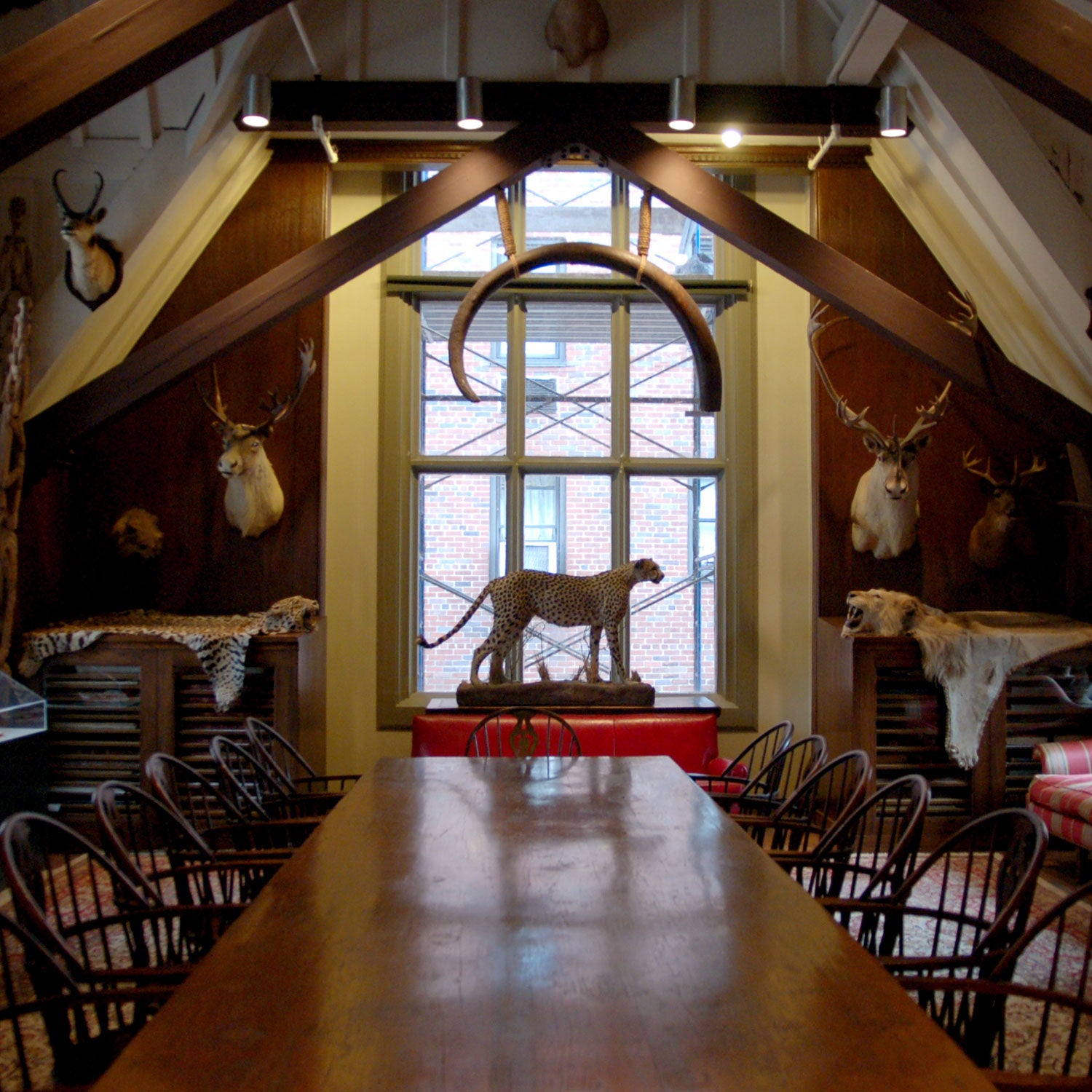It’s not just enough to circle the globe on a raft made of milk crates. To be in the , you need to be of both iron will and iron stomach.
The Explorers Club recently held its at the in New York City. On the menu were deep-fried tarantulas, cricket nymph orzo, and waxworm quesadillas. While the items may have shocked the waiters, they certainly didn’t shock the members.
“It’s kind of always existed, except for maybe the first few dinners,” says Explorers Club archivist Lacey Flint, regarding the organization’s obsession with serving unorthodox appetizers. The exotic appetizers “popped up from time to time in the 1920s and 1930s, but it became kind of a thing in the 1940s.”
In fact, people complained when the club ditched the oddball hors d’oeuvres in 2011 and 2012, club president says. But they’re back, and this year the appetizers came with a conservation message. “Look, if we fully intend to feed the world as we go forward, we’re going to have to think of a better protein source,” says Roseman. “We all know bugs are high in protein, and we know they’re good for you, but what most people don’t know is how delicious they can be.”
It’s a shift from past years when the appetizers seemed to be more about shock value than anything else. In 1951, a member brought what he claimed was frozen mammoth meat from the Aleutian Islands to the dinner table. In 1952, the club served turtle soup and caribou cutlets. In 1966, it was polar bear, baby seal, and iguana. In 1975, armadillo and possum. And last year, goat eyeballs replaced the cocktail onions on the martini glasses.
Going forward, Roseman says the group is trying to get away from serving anything that could be seen as controversial. “This year, we said no mammals, no birds, no camels. We definitely made sure it was insects and not alligators or camels or goat penises or things like that.”
David Gregory Gordon, author of the , was hired to do the cooking for this year’s dinner. He says that as he mingled with guests, he noticed a divide among them.
“From my own observation, there’s new blood and there’s old blood,” Gordon says. “As far as the old school, they’re the Kon-Tiki raft guys. They’re older, and they’re more conservative. The newer people want something that’s respectful of cultural diversity and sustainable. I think they were ready for a change.”
According to Flint, part of this shift was driven by the venue change. It’s previously been at the , where, “we had more of an opportunity to, I guess, serve animals as food,” she says. “Last year, there was an ostrich bar and an alligator raw bar. At the Museum of Natural History, they said, ‘We don’t want that kind of stuff here because we are conservation based.’”
Gordon didn’t have to go to the Aleutians to get the 300 tarantulas he served this year, but rounding up enough bugs to serve was quite a task, he says. He’s even comfortable calling the event the “single largest bug-eating event in the history of the world.”
“I can’t imagine there were 1,000 people in Ancient Greece, where they liked to eat locusts, all sitting around eating bugs at one time,” Gordon says. The bill for the food came to $15,000, which buys a lot of crickets.
As far as what the future looks like for Explorers Club dinners, Roseman says that next year’s focus may be on exotic fruits and other plants. While it’s hard to imagine former member Teddy Roosevelt endorsing a dinner solely of fruits and veggies, it’s nice to see the club moving in a conscientious direction.


